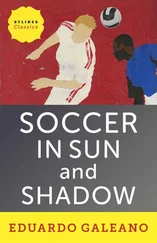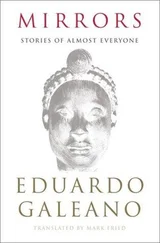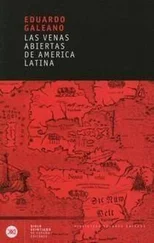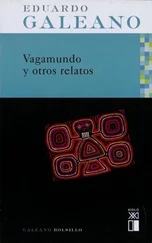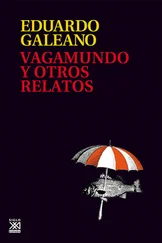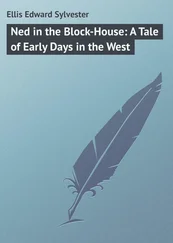As usual, nature’s exterminators recited love poems to her.
It was held in Cancún.
No place could have been better.
At first sight Cancún is a picture postcard, but to transform this old fishing village into a gigantic trendy hotel with thirty thousand rooms, over the last half century dunes, lakes, pristine beaches, virgin forests and mangroves were wiped out, along with every other obstacle that nature put in the way of its path to prosperity. Even the beach sand was sacrificed. Now Cancún buys its sand from somewhere else.
December 1. FAREWELL TO ARMS
Costa Rica’s president Don Pepe Figueres once said: “Here, the only thing wrong is everything.”
And in the year 1948 he disbanded the armed forces.
Many were those who decried it as the end of the world, or at least the end of Costa Rica.
But the world kept on turning, and Costa Rica was kept safe from wars and coups d’état.
December 2. INTERNATIONAL DAY FOR THE ABOLITION OF SLAVERY
In the middle of the nineteenth century, John Brown, a white traitor to his race and class, led an assault on a military arsenal in Virginia to get weapons for the slaves on the plantations.
Colonel Robert E. Lee commanded the troops that surrounded and captured Brown. Lee was promoted to general and soon came to lead the army that defended slavery during the long US war between the South and the North.
Lee, general of the slavers, died in bed. His send-off included military honors, martial music, cannon salutes and speeches that exalted the virtues of “the greatest military genius in America.”
Brown, friend of the slaves, was convicted of murder, conspiracy and treason for his assault on the arsenal, and was sentenced to die. He was hanged on this day in 1859.
Today, which by coincidence is the International Day for the Abolition of Slavery.
December 3. THE KING WHO SAID “NO MORE”
For four centuries black Africa specialized in the sale of human flesh. In the international division of labor, Africa’s fate was to produce slaves for the world market.
In 1720 one king refused.
Agaja Trudo, king of Dahomey, set fire to the Europeans’ forts and razed the slave ports to the ground.
For ten years he fought off harassment from the traffickers and attacks from neighboring kingdoms.
He could hold out no longer.
Europe refused to sell him weapons if he did not pay in human coin.
December 4. GREEN MEMORIES
Like us, trees remember.
But unlike us, they do not forget: they grow rings in their trunks, one after another, to stockpile their memory.
The rings tell the story of each tree, revealing its age, as much as two thousand years in some cases, the climate it lived through, the floods and droughts it endured; the rings conserve the scars of fires, infestations and earthquakes.
One day like today, a scholar of the subject, José Armando Boninsegna, was given the best possible explanation by the children at a school in Argentina:
“Little trees go to school and learn to write. Where do they write? On their bellies. And how do they write? With rings that you can read.”
December 5. THE LONGING FOR BEAUTY
The president of the Spanish Society of Natural History ruled in 1886 that the cave paintings at Altamira were not thousands of years old: “They are the work of some mediocre disciple of today’s school of modern art,” he insisted, confirming the suspicions of nearly all the experts.
Twenty years later, those experts had to admit they were wrong. Thus it was proven that the longing for beauty, like hunger, like desire, has always accompanied the human adventure in the world.
Many years before that thing we call civilization, we were turning bird’s bones into flutes and seashells into necklaces, we were making colors by mixing earth, blood, powdered rocks and plant juices to beautify our caves and turn our bodies into walking paintings.
When the Spanish conquistadors arrived at Veracruz, they found the Huasteco Indians walking around naked, she’s and he’s, with their bodies painted to please each other and themselves.
“These are the worst,” concluded the conquistador Bernal Díaz del Castillo.
December 6. A LESSON IN THEATER
On this day in 1938, the House Committee on Un-American Activities, operating out of Washington, questioned Hallie Flanagan.
She ran the Federal Theatre Project.
Joe Starnes, a congressman from Alabama, led the interrogation.
Referring to an article Hallie had written, he asked: “You are quoting from this Marlowe. Is he a Communist?”
“I am very sorry. I was quoting from Christopher Marlowe.”
“Tell us who Marlowe is, so we can get the proper reference.”
“He was the greatest dramatist in the period immediately preceding Shakespeare.”
“Of course, we had what some people call Communists back in the days of the Greek theater.”
“Quite true.”
“And I believe Mr. Euripides was guilty of teaching class consciousness, wasn’t he?”
“I believe that was alleged against all of the Greek dramatists.”
“So we cannot say when it began,” sighed Congressman Starnes.
December 7. ART DOESN’T AGE
In the year 1633, more or less on this day, Gregório de Matos was born, the poet who knew best how to poke fun at colonial Brazil.
In 1969, at the height of the military dictatorship, the commander of the Sixth Region denounced his poems as “subversive.” They had been enjoying the sleep of the just for three centuries in the library of the Ministry of Culture in the city of Salvador da Bahia, when the commander threw them onto the bonfire.
In 1984, in a neighboring country, the military dictatorship of Paraguay banned a play about to open in the Harlequin Theater, since it was a “pamphlet against order, discipline, soldiers and the law.” Twenty-four centuries had passed since Euripides had written The Trojan Women .
December 8. THE ART OF NEURONS
In 1906 Santiago Ramón y Cajal received the Nobel Prize in medicine.
He had wanted to be a painter.
His father would not let him, so he had to become the greatest Spanish scientist of all time.
He got his revenge by sketching his discoveries. His drawings of the brain were on a par with Miró and Klee: “The garden of neurology sparks incomparable artistic emotions,” he liked to say.
He enjoyed exploring the mysteries of the nervous system, but he loved drawing them even more.
And what he loved most of all was saying out loud whatever was on his mind, well aware that it would make him more enemies than friends.
Sometimes he would ask in surprise, “You have no enemies? How can that be? Did you never tell the truth or stand up for justice?”
December 9. THE ART OF LIVING
In 1986 the Nobel Prize for medicine went to Rita Levi-Montalcini.
In troubled times, during the dictatorship of Mussolini, Rita had secretly studied nerve fibers in a makeshift lab hidden in her home.
Years later, after a great deal of work, this tenacious detective of the mysteries of life discovered the protein that multiplies human cells, which won her the Nobel.
She was about eighty by then and she said, “My body is getting wrinkled, but not my brain. When I can no longer think, all I’ll want is help to die with dignity.”
Читать дальше




